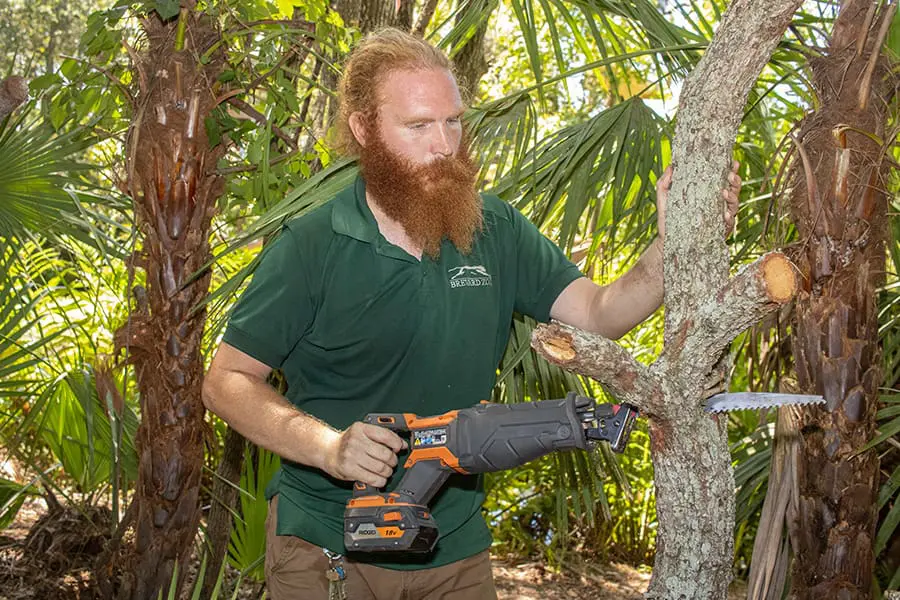

Franzen at work on the macaw perching.
What do monkeys, sloths, parrots and boas have in common? They’re arboreal animals, meaning they spend most to all of their lives in the trees.
To provide the most appropriate environments for these species, we’ve outfitted each of their habitats with a complex network of branches, logs or vines known as “perching.” It is as much a verb as it is a noun, requiring resourcefulness, dedication and old-fashioned elbow grease to pull off properly.
Keeper Marc Franzen, deemed a “perching extraordinaire” by his coworkers, has invested much of his time and energy into expanding the macaw perching over the past several years. Tree trimmings from preconstruction clearing at the future site of our temporary lion habitat presented the opportunity for Franzen to pick the project back up earlier this summer.
“The first thing I need to consider is functionality,” said Franzen. “Is the material appropriate for this species? How far apart do the supports need to be to hold the weight of the animal? Can they access shelter if they want it, or stand in the sun or the rain if they want to?
“It sounds strange, but once I look at the pieces, I assemble them in my head and make a plan.”
Franzen uses a post hole digger to make space for the thicker branches that serve as supports. Skinnier branches are screwed in to connect the supports horizontally. If the habitat isn’t completely enclosed with mesh, the base of the perching may be wrapped with metal sheeting to prevent the animals from climbing onto the ground and walking away.
Once the perching is in place, Franzen and his fellow keepers will casually observe the animals to see how they like the new space. Making full use of the perching is a promising sign, as is the expression of natural behaviors.
Perching may be taken down and rebuilt every few months or years to provide a novel environment for the animals or replace aging wood.
Quality animal care is expensive. If you’d like to help us continue to provide enriching, naturalistic habitats, click here to make a contribution.
